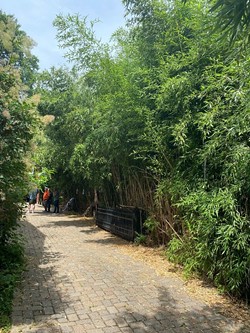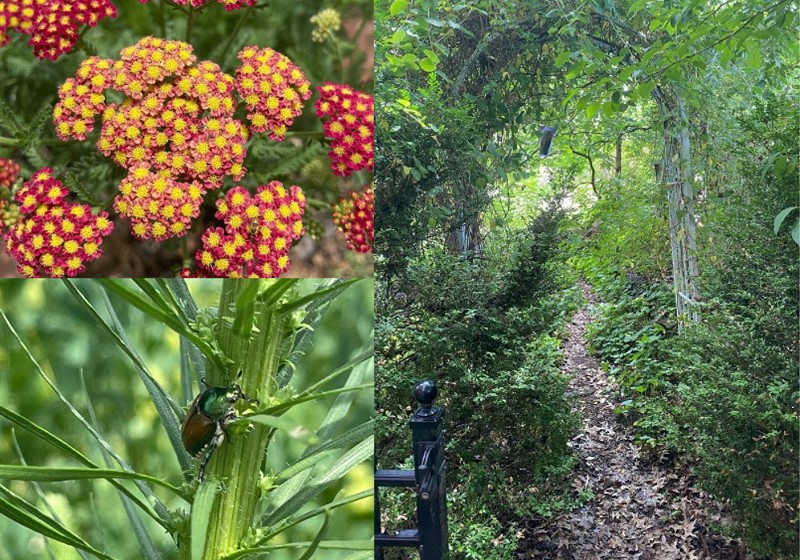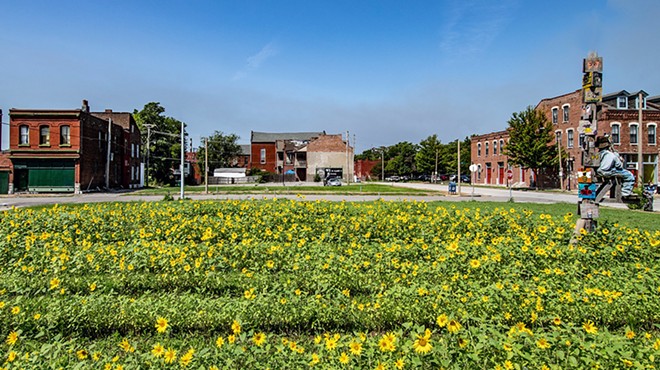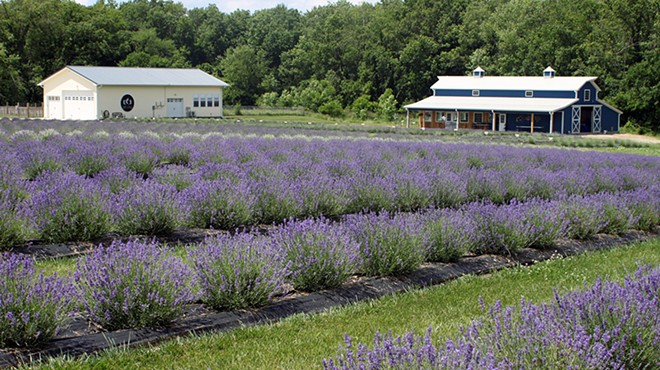Stepping from the sun-scorched sidewalk into the shaded canopy beneath the trees teleported me from an asphalt desert to a cool, green oasis. Here, on June 26, I met the sweet fragrance of 1,000 flowers, heard the songs of 100 birds and stood with the dozens of people enjoying the smells, sights and sounds of the Sustainable Backyard Tour.
The event, put on by the St. Louis nonprofit Sustainable Backyard Network, was the 11th annual tour — and the first after a two-year hiatus due to COVID-19. The free event brings St. Louisans to eco-friendly backyard spaces in the St. Louis and St. Charles region to share ideas for sustainable living.
The tour and the nonprofit are the brainchild of Terry Winklemann, founding director of the network and a realtor with RedKey Realty Lenders. The event started in 2010 as a small six-yard tour of chicken coops, growing into a showcase of 30 private yards and the sustainable practices of their owners in St. Louis city and county the following year. Each year’s tour has drawn increasing interest from the public.
This year, over 1,000 people registered to tour 43 yards featuring everything from quail coops to backyard renewable-energy projects. I stopped by three gardens: UCity Food Forest, Clayton Woodland Garden and the Art Hill Artists’ yard. Each had it

Julian McCall
The free tour brings St. Louisans to eco-friendly backyard spaces to share ideas for sustainable living.
The UCity Food Forest is a kitchen garden created by Toni on Delmar Boulevard. This yard featured hundreds of edible plants in a relatively small area with limited sunlight, which is not an environment in which one would expect a garden to thrive. One of Toni’s tips was always to reuse and recycle materials to limit the amount you need to purchase. Discarded bed posts and laundry baskets supported several of her plants, showing how accessible gardening materials can be.
She also had several quail and a bee farm; her quail produce about six eggs per day, and the bees may make up to 80 pounds of honey — too much to enjoy on one’s own, so she shares with friends. Sharing plants, produce and advice among the Sustainable Backyard Network was a recurring theme across the three yards.
Several yards showcased renewable-energy projects. At Clayton Woodland Garden, Mark, the owner, installed a geothermal heating and cooling system in his backyard. This system buries four underground heat-pump exchanges 250 feet beneath the surface to pump cool air in the hot months and warm air in the cold months. The heat pumps cut the peak heating and cooling bills in half, even though renovations increased their house size by 65 percent. UCity Food Forest also utilized solar panels, practically eliminating its energy bill; the owners pay only 47 cents in electricity usage.
Clayton Woodland Garden came about through a gradual process of trial and error focused on promoting native plants and removing turf lawn. The many trees and plants make this yard an urban refuge for animals such as blue jays, robins, cardinals, owls and chipmunks. This refuge provides a peek at nature; visitors can watch owls swoop down and grab chipmunks as blue jays fly all around you.
A thick patch of bamboo stood alongside the trees, providing refuge from predators for small animals and shade for people. Urban gardening can help limit the effects of urban heat islands, as cities covered in concrete and asphalt are warmer than surrounding areas with grass and trees.
Another example of the benefits of urban gardens is their effect on flooding. The Art Hill Artists’ yard was started by a woman living at the bottom of a hill whose yard and neighbor’s basement flooded whenever it rained. She planted a fern rain garden, stopping the flood of water from pooling in her yard or her neighbor’s basement. Each gardener stressed the importance of planting and promoting native Missouri plants for local ecosystems.
I left the tour feeling encouraged by the small slice of sustainability in St. Louis I’d seen. In a world seemingly obsessed with how bad everything is, it’s easy to become discouraged. Seeing St. Louisans building a sustainable life for themselves — with plenty of tips to help you get started — is like a cold glass of water on a scorching day.




